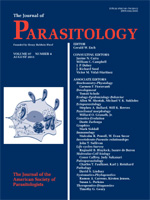A collection of laelapine mites from small mammals in the Galapagos Islands are identified and their host distributions reviewed. Two species of native rodents, Aegialomys galapagoensis and Nesoryzomys narboroughii, were infested only with laelapine species typical of Neotropical oryzomyine rodents; Rattus rattus was infested with Laelaps nuttalli, a host-specific ectoparasite endemic to Old World Rattus. A synopsis of Gigantolaelaps Fonseca is provided and we describe a new laelapine mite, Gigantolaelaps aegialomys n. sp., from the pelage of the rodent A. galapagoensis on Santa Fe Island. The new species has strong morphological affinities with a subgroup of Gigantolaelaps associated with a group of semiaquatic oryzomyine rodents (Holochilus, Nectomys, Sooretamys, Pseudoryzomys, Oryzomys palustris). The other nominal species of this group, Gigantolaelaps mattogrossensis (Fonseca, 1935) and Gigantolaelaps goyanensis Fonseca, 1939, are characterized by 10 setae on Tibia IV, large metapodal shields, and spiniform setae on Coxae I. Gigantolaelaps aegialomys is distinguished from these species by a lack of clearly spiniform setae on Coxa I, with setiform distal seta longer than the proximal; metapodal shields about the same size as the stigma; less than 100 µm separating the first pair of sternal setae.
BioOne.org will be down briefly for maintenance on 12 February 2025 between 18:00-21:00 Pacific Time US. We apologize for any inconvenience.
How to translate text using browser tools
1 August 2011
Some Laelapine Mites (Acari: Laelapidae) Ectoparasitic on Small Mammals in the Galapagos Islands, Including a New Species of Gigantolaelaps From Aegialomys galapagoensis
Donald Gettinger,
Fernanda Martins-Hatano,
Scott L. Gardner
ACCESS THE FULL ARTICLE

Journal of Parasitology
Vol. 97 • No. 4
August 2011
Vol. 97 • No. 4
August 2011




